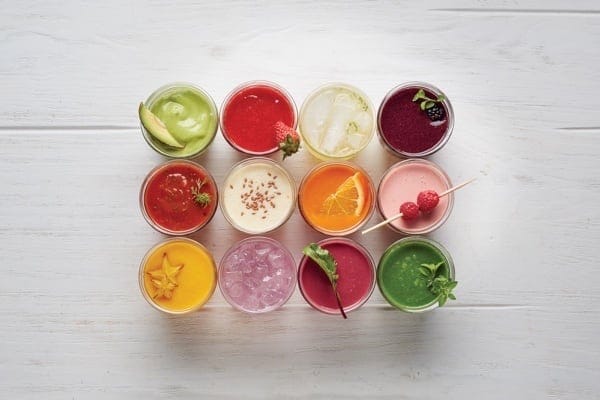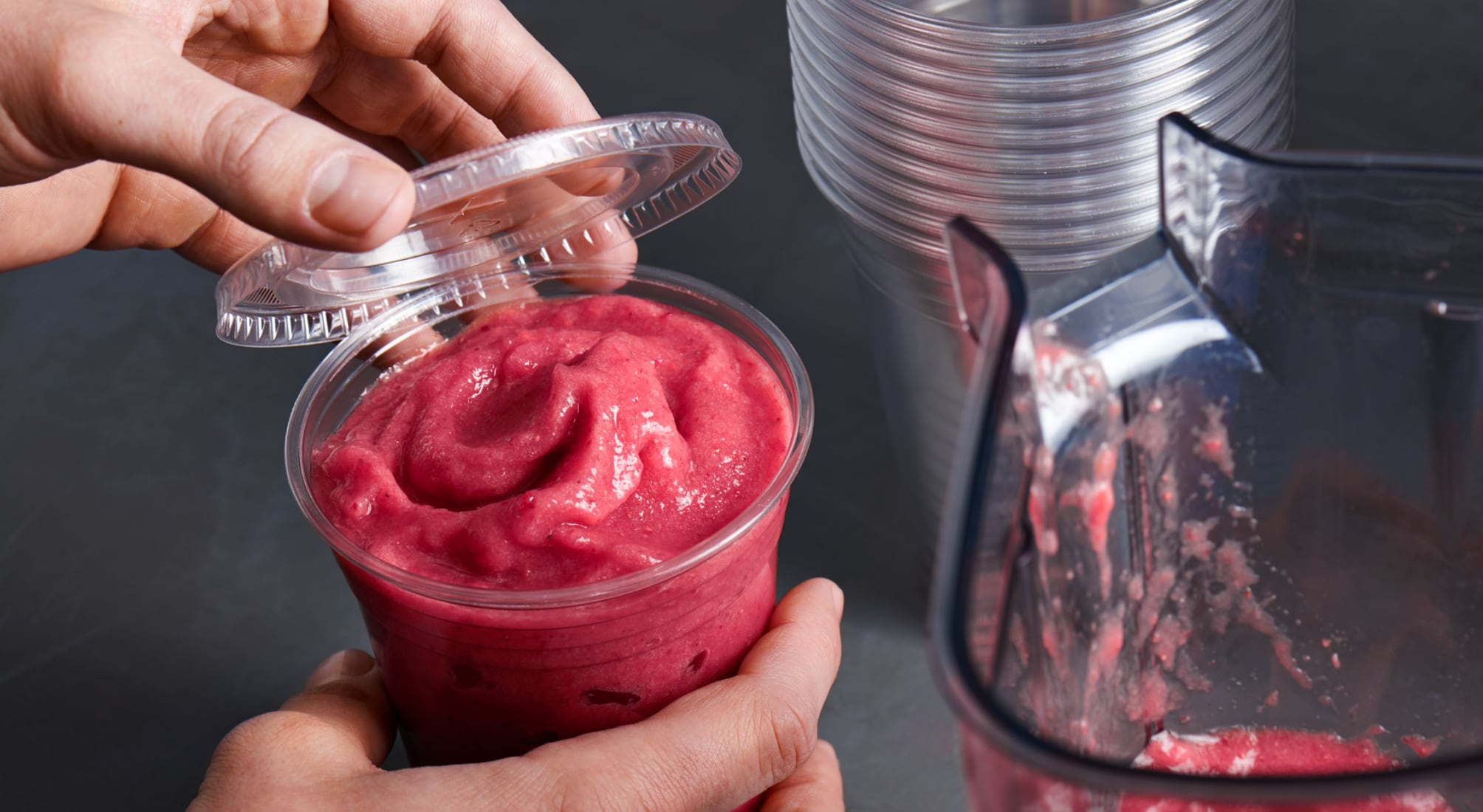Made-to-Order Smoothies that Serve Up Delicious Nutrition in Healthcare Settings
Both nutritious and refreshing, the ingredient-rich smoothie is a perfect anytime treat for hospital patients of all ages as well as residents of long-term care facilities. Besides being a treat, smoothies also can serve as a concentrated source of nutrients that don’t require chewing or consuming large quantities of food. What’s more, they can be relatively easy for staff to prepare.
However, building the perfect smoothie for hospital patients or those living in long-term care facilities isn’t a one-size-fits-all process. Besides having different taste preferences, patients or residents also have different dietary needs. Here, we’ll consider some of these challenges and guidelines on how to make smoothies across healthcare settings and for three specific groups: adult hospital patients, seniors living in long-term care facilities or nursing homes, and pediatric patients.

Making Smoothies for Hospitalized Adults
Hospital patients may find it difficult to get all their nutrients during mealtimes for a wide variety of reasons, ranging from a lack of appetite to anxiety, nausea or pain. Sipping on a smoothie in between meals can be an easy way to make up for the calories, protein, and nutrients that hospital patients can miss out on.
Smoothies also can serve as a special treat for patients stuck in hospital rooms. Those who are repeatedly poked and prodded may feel a strange loss of control in their daily routines. Having a made-to-order smoothie can help lessen that feeling and may also improve patient satisfaction. For example, you can make smoothies to satisfy a craving for chocolate or indulge a penchant for specific flavors, like peach, blueberry, or raspberries.
You can also use smoothies in the hospital setting to help overcome dietary roadblocks. For instance, cancer patients going through treatment may have an aversion to hot foods or foods with specific aromas. Cooling smoothies can be a great way to avoid both issues, while giving patients an option they will enjoy. And adding ingredients like ginger, mint, or tea may be a way to soothe nerves and ease the symptoms of nausea.
In all cases, it’s important to choose ingredients carefully: Smoothies typically start with a liquid, such as water, soy milk, dairy milk, yogurt, or even a hospital-grade nutrition supplement. You can also use thick Greek yogurts or drinkable kefir to boost flavor, calories, and protein. Using yogurt as a base for smoothies also introduces probiotics, which may be beneficial for patients suffering from digestive issues.
Most smoothies also feature fresh or frozen fruit, which is great for flavoring, sweetening, and, in some cases, thickening the smoothie. If using canned fruit, be wary of added sugar and opt for varieties that are canned in their own juices. Other possible add-ins include tofu, for extra protein, and nuts and seeds, like almonds, flax seed, or peanut butter. Including these healthy fats can impart extra flavor and richness.
When making smoothies for hospital patients, you’ll want to be certain that all fresh fruits and vegetables are thoroughly washed before using, and always be sure the patient is permitted to eat all ingredients. Allergies, medications, and certain medical issues may eliminate some smoothie ingredients so always check with your team’s registered dietitian or unit nurse if there are ever any questions.

Smoothies for Geriatric Patients
Senior citizens living in long-term care facilities may enjoy smoothies as an easy way to get the fruits, vegetables, protein, and calories they need in an easy-to-consume, concentrated format that doesn’t require chewing. And if you’re trying to help boost an individual’s consumption of certain foods or nutrients, then smoothies are a great way to do that, too. You can use flavor-forward ingredients, such as fruit, ginger, and citrus, to enhance the flavor of other key additions, such as vegetables or protein powders.
Recipes to consider include green smoothies, which are a great way to add more nutrient-dense leafy green vegetables to an individual’s diet, or smoothies made with peaches and/or blueberries. Peaches add delicious flavor and a host of essential nutrients such as vitamin C, niacin, and potassium. Meanwhile, antioxidant-rich blueberries may be beneficial for heart, brain, and digestive health.
While smoothie ingredients don’t typically confer medicinal powers, they can be used to pack a one-two nutritional punch. For example, while a smoothie by itself won’t likely boost an individual’s immune system, it can provide greater variety to their diet, which helps to keep eating fun and can provide an assortment of nutrients the body needs to stay healthy. This, in turn, can support immune system health among other things.
Again, be sure to consider smoothie ingredients carefully. Individuals who suffer from frequent heartburn may require low-acid smoothies made with almond milk instead of traditional cow’s milk or yogurt. And diabetic patients will have to be careful about consuming fruit-based smoothies, since many fruits are high in sugar. You can lower the sugar content by using unsweetened soy milk, keeping the amount of fruit in check, and sweetening the drink with approved sugar substitutes. Because some residents in long-term care may have difficulty swallowing, you’ll also want to work with onsite speech therapists to approve smoothie consistencies for specific patients.
An Adaptable Strawberry-Oat Smoothie
Whether you’re making a smoothie for an adult, senior, or child, most smoothies include a liquid, fruits, vegetables, protein, and a small amount of healthy fats. You can also customize each blend to match an individual’s needs. Here’s a versatile Strawberry-Oat Smoothie recipe that can be adapted for different groups or dietary needs.

Strawberry-Oat Smoothie Base (makes 3 servings)
- 1 ¼ cup (300 ml) coconut water (or liquid of choice)
- 1 small (120 g) banana, peeled
- 1 ¼ cup (300 ml) low-fat vanilla yogurt
- ½ teaspoon ground cinnamon
- 2 ¼ ounces (65 g) quick oats
- ½ lb (225 g) frozen strawberries
Place all ingredients into the Vitamix container in the order listed and secure the lid. Start the blender on its lowest speed, then quickly increase to its highest speed, using the tamper to press ingredients toward the blades. Blend for 30 seconds, or until the desired consistency is reached.
Need more calories? Consider adding the higher-calorie ingredients mentioned earlier such as avocado, soy milk, chia and flax seeds, sunflower butter, protein powder, full fat yogurt, and/or hospital-grade nutrition supplements. You will probably need to add extra liquid when adding these ingredients.
Need more variety? Eating the rainbow is great way to get the variety of nutrients our body needs. This is a great base recipe that can be easily modified to build that rainbow by simply replacing the strawberries with one of the following ingredients: raspberries, mangoes, blueberries, or a combination of green grapes (1/2 lb) and spinach (1 ½ cup).
About the author
Leigh-Anne Wooten, nutrition advisor for Vitamix, is a registered and licensed dietitian, a fellow of the Academy of Nutrition and Dietetics, and a Lean Six Sigma Black Belt. Wooten holds a master’s degree in nutrition science.
Related Articles

Heart Healthy Juice
Registered Dietitian, Leigh-Anne Wooten shares how eating plant-based whole foods can support heart health & overall health.

One Family’s Mission to Disrupt the Feeding Tube Nutrition Market One Blended Meal at a Time
Learn how one family uses the Vitamix to inspire the feeding tube community.

Smoothie Day Boosts Spirits and Nutrition for Cancer Patients at Renowned Children’s Hospital
Learn more about Smoothie Day at University Hospitals Rainbow Babies & Children’s Hospital’s programs.
